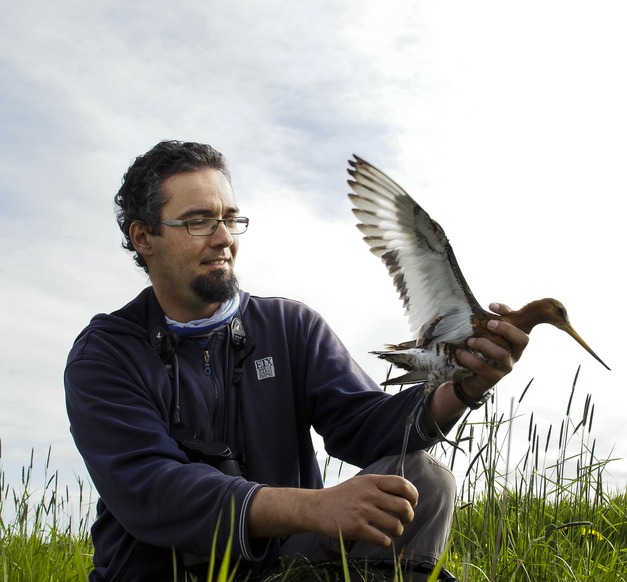
Even though winter is upon us one can still spot a few migratory bird species around Iceland; such as turnstones, sandpipers, European golden plovers and oystercatchers, but the last mentioned stays in Iceland all year as a part of the avian strain of resident birds.
Data on oystercatchers play a specific role in a new multi-national study of research scientists who demonstrate significant changes on the mobility and movement profile of animals in the North in conjunction with climate change.
"The birds that migrate are doing poorly these days. This is particularly the case for shorebirds that breed in higher latitudes. We are witnessing a seasonal availability of feed, i.e. the food that the migratory birds feed on and give to their chicks to grow is moving within the season, so it is getting earlier and earlier in conjunction with global warming."
This says the Portuguese Jose Alves, who is a visiting research scientist at the University of Iceland Research Centre South. He is one of the authors of an article published recently in the world-renowned academic journal Science; based on the aforementioned study.
Jose comes to Iceland every summer to do his research on oystercatchers and the black-tailed godwit, but the latter lays its eggs earlier and earlier in the spring due to climate change. This is shown in studies conducted by researchers at the UI Institute of Regional Research Centre in the South, led by Tómas Grétar Gunnarson, director.
Visit the new website for the University of Iceland's Institutes of Research Centres.
"This used to be in tune and now it is getting out of sync. We call this a trophic mismatch in the ecosystem. This is one of the the reasons this bird is not doing so well. The migratory birds need to fly to the nesting sites and some cannot do it soon enough to adjust the laying dates with this earlier picks of food resources," says Jose Alves, visiting research scientist at the University of Iceland Research Centre South.

Arctic tern in a crisis - shorebirds struggle
Freydís Vigfúsdóttir is also a research scientist at the University of Iceland who has focused on changes in the biosphere in connection with climate change.
„Iceland and the North-Atlantic is an incredibly rich area offering excellent conditions to raise the young ones. The ocean surrounding Iceland produces an enormous amount of biomass creating favourable conditions for millions of birds, including sea birds, as well as whales and seals, to take care of their young ones. The migratory birds come here because the conditions to lay their eggs and the food supply at sea are favourable to sustain this biosystem," says Freydís who has focused on the Arctic tern most of her scientific career. The Arctic tern has been struggling in raising their chicks in a few large and well-known nestling sites in Iceland. Freydís says it is vital that when the chicks hatch there is food available.
"Iceland fosters an incredibly large number of Arctic terns and approximately thirty million sea birds in total. There is thus a large number of chicks that need feeding during the summer. These sea birds are telling us that there are changes on the oceanic environment that we need to monitor. The Arctic tern has been in a crisis for a while now and sea birds can serve as a great barometer on the oceanic environment and its health." This means that the failures in the Arctic terns’ laying reflects the changes in the sea around Iceland.
Jose Alves is on the same wavelength and says that there is a mismatch between when resources are available in the biosphere and when the birds need it.
"This used to be in tune and now it is getting out of sync. We call this a trophic mismatch in the ecosystem. This is one of the the reasons this bird is not doing so well. The migratory birds need to fly to the nesting sites and some cannot do it soon enough to adjust the laying dates with this earlier picks of food resources.


